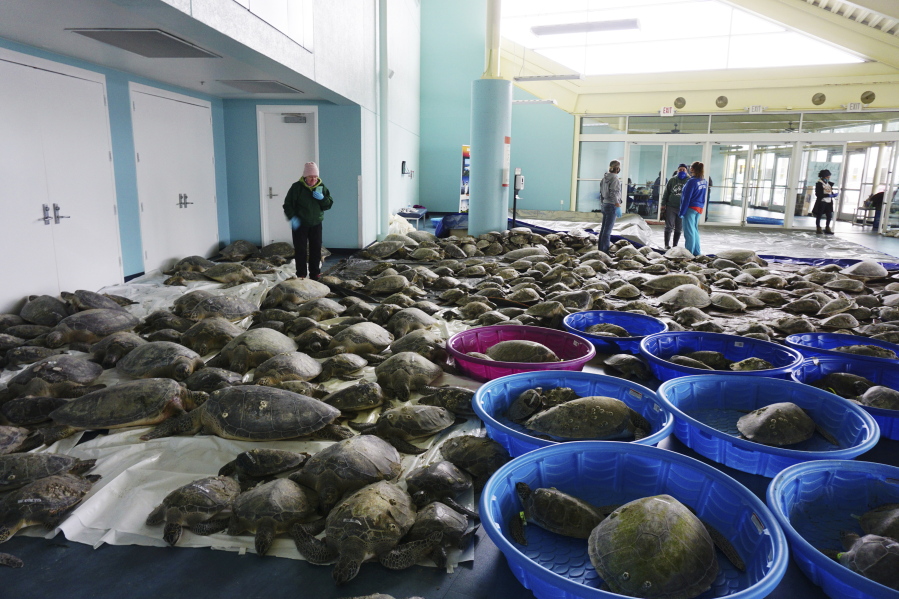DALLAS — As many people in the southern U.S. hosted neighbors who had no heat or water during the vicious February storm and deep freeze, Kate Rugroden provided a refuge for shell-shocked bats.
Starving and disoriented, the winged mammals tumbled to the snow-coated ground as temperatures plunged to levels rarely seen in the region.
“They burned through their energy reserves as they tried to wake up and get away from the cold and ice,” said Rugroden, of Arlington, Texas, one of numerous rehabilitation specialists nursing stranded bats plucked up by sympathetic people. “And there aren’t any insects out there for them to eat yet.”
Bats are among numerous wildlife believed to have taken a beating in the South, a region unaccustomed to such a severe and prolonged cold snap. Many species migrate there for winter precisely because of its normally mild weather.
It might take weeks or months to determine the extent of the harm, but anecdotal evidence is already turning up — including dead robins on yards and sidewalks.
Alligators in Oklahoma’s Red Slough Wildlife Management Area were photographed with snouts protruding from frozen waterways — a survival maneuver enabling them to breathe while their bodies go dormant to conserve energy.
Fish kills were feared in Arkansas and Louisiana. The Texas Parks and Wildlife Department said it expected casualties among exotic deer and antelope. Across the Gulf of Mexico coast as far east as Florida, naturalists worried about monarch butterflies and the milkweed plants essential to their survival as they prepare to migrate northward.
“Animals can respond to events like this by moving elsewhere, but if it’s beyond your flight range or your walking range you have to hunker down,” said Perry Barboza, a wildlife biologist at Texas A&M University. “Some animals like small birds can do it just a night or two. The duration becomes the killer.”
Sea turtles stunned by frigid Gulf coastal waters were still being cared for at facilities this week. More than 10,600 had been found and officials were tabulating how many died, said Donna Shaver, Texas coordinator for the Sea Turtle Stranding and Salvage Network.
Sea Turtle Inc. took in so many that it used the South Padre Island Convention Center to accommodate the overflow, executive director Wendy Knight said.
“Our hospital is now completely filled to the gills,” Knight said.
While extreme weather is particularly dangerous for imperiled species, the whooping crane — listed by the federal government as endangered — appears to have weathered the storm, said Joe Saenz, manager of the Aransas National Wildlife Refuge in Texas.
About 500 of the majestic birds spend winters at the refuge before returning to Canadian nesting grounds. During the cold spell, some were spotted feasting on dead fish floating on the Gulf waters.
Biologists are concerned about monarch butterflies, which the U.S. Fish and Wildlife Service in December designated as a candidate for endangered or threatened status because of a sharp decline in recent decades.



